Abstract
Xenorhabdus nematophilus subsp. dutki, an entomopathogenic bacterium, is vectored by steinernematid nematodes into insects, where it produces broad-spectrum antibiotics. The use of the nematode-bacterium complex against soil-dwelling pest insects could introduce antibiotics into the soil via the dead insect fragments during the emergence phase of the nematodes. Studies on the stability and activities of these antibiotics produced in the insect Galleria mellonella may contribute to assessing the possible impact of antibiotics on soil bacteria. Two isolates of X. nematophilus subsp. dutki (isolates GI and SFU) produced xenocoumacins 1 and 2 in cadavers of G. mellonella larvae in a 1:1 ratio. Total xenocoumacin 1 and 2 production was 800 ng/200 mg (wet weight) of insect tissue for the GI isolate. Antibiotic activity of water extracts from insects that had been infected with X. nematophilus was stable at 60°C for 1 h and after repeated freeze-thaw cycles. The antibiotic titer of extracts held at 27°C declined by day 10. The spectrum of bacterial species killed by antibiotics produced in insect cadavers varied with the isolate of X. nematophilus. Levels of antibiotic activity were greater in vivo than in tryptic soy broth, which may represent a nutrient effect. The bacterial isolate, culture condition, and presence of nematodes influenced the total antibiotic production in vivo. However, the levels of activity were not correlated with bacterial levels in the different growth environments. Insect cadavers with antibiotic activity transiently lowered the numbers of the bacteria in the soil, the extent of decline varying with the strain of X. nematophilus and the time of sampling.
Full text
PDF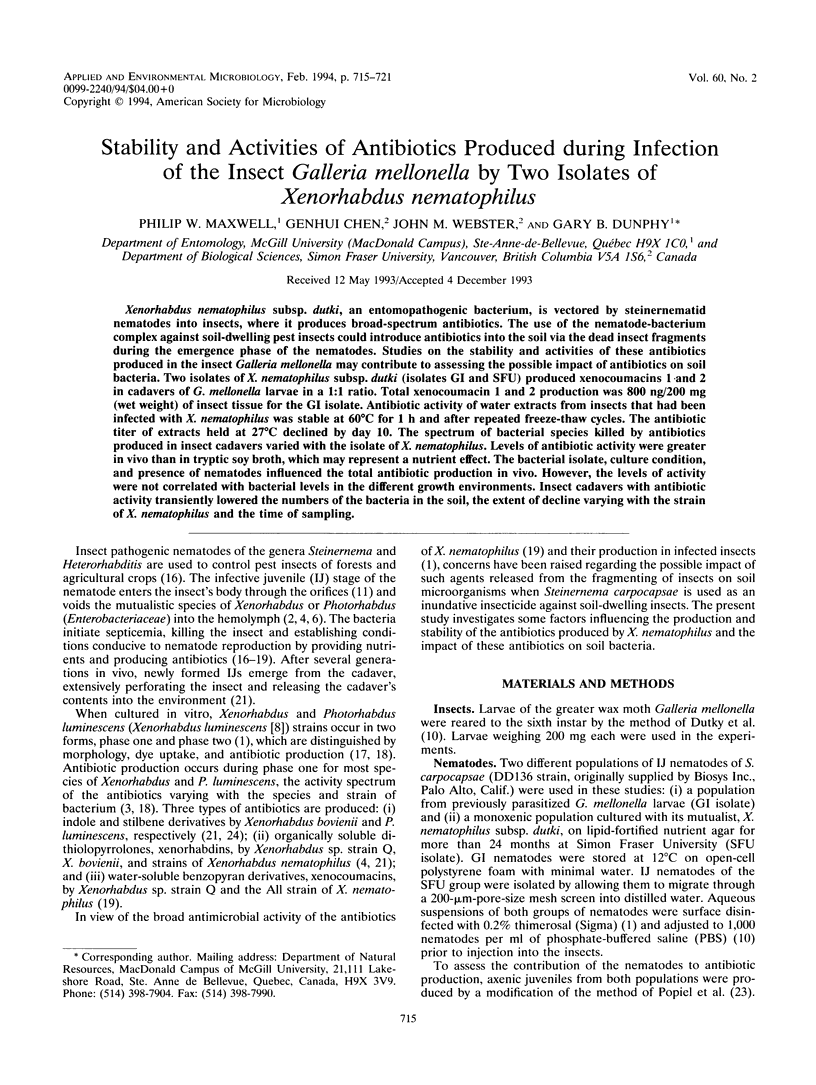
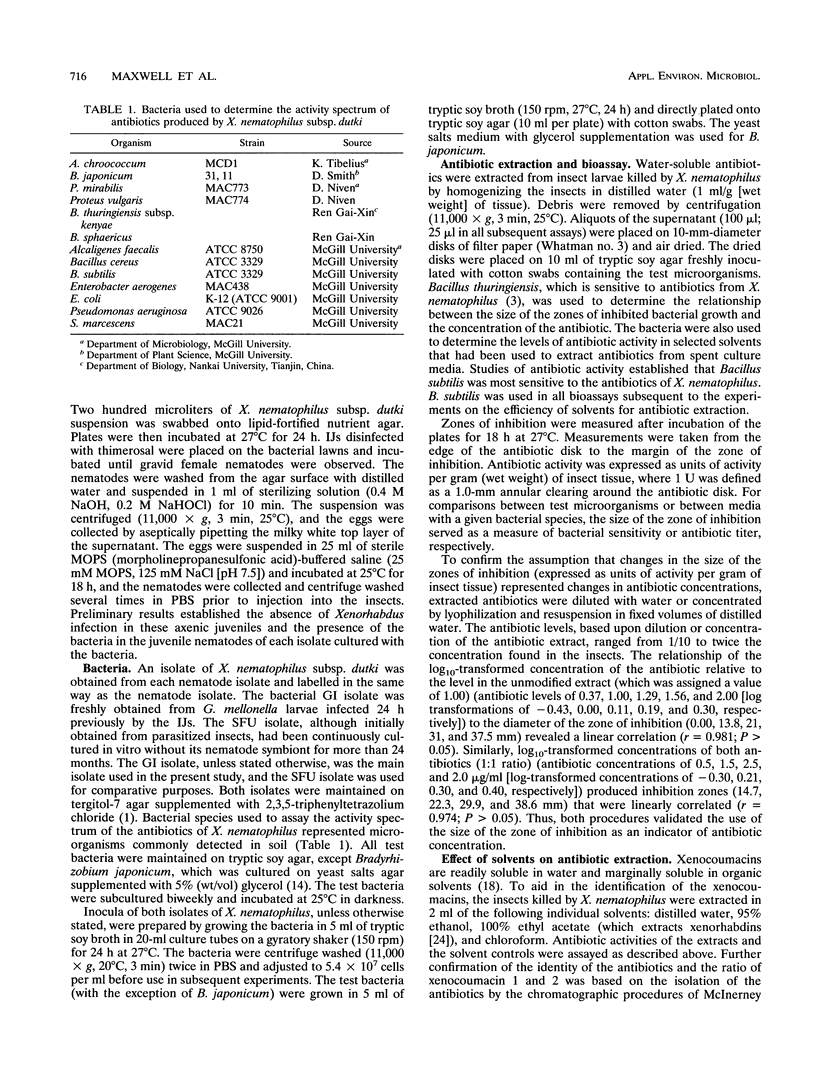
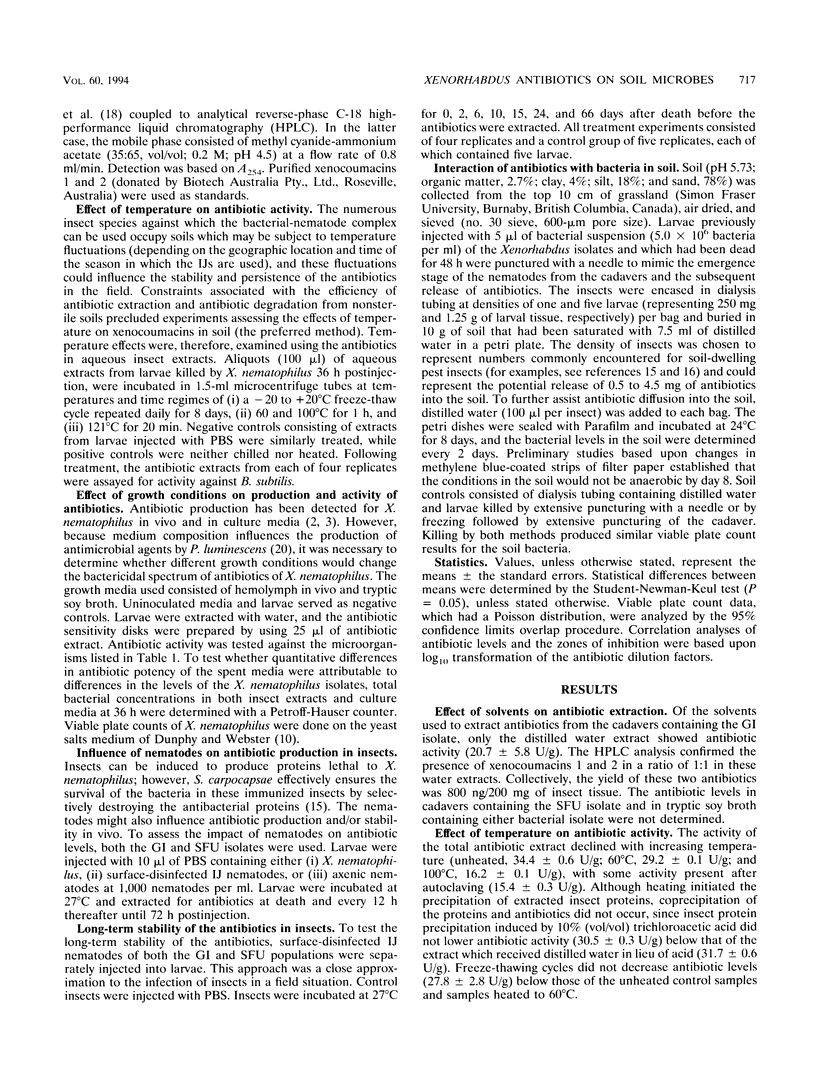
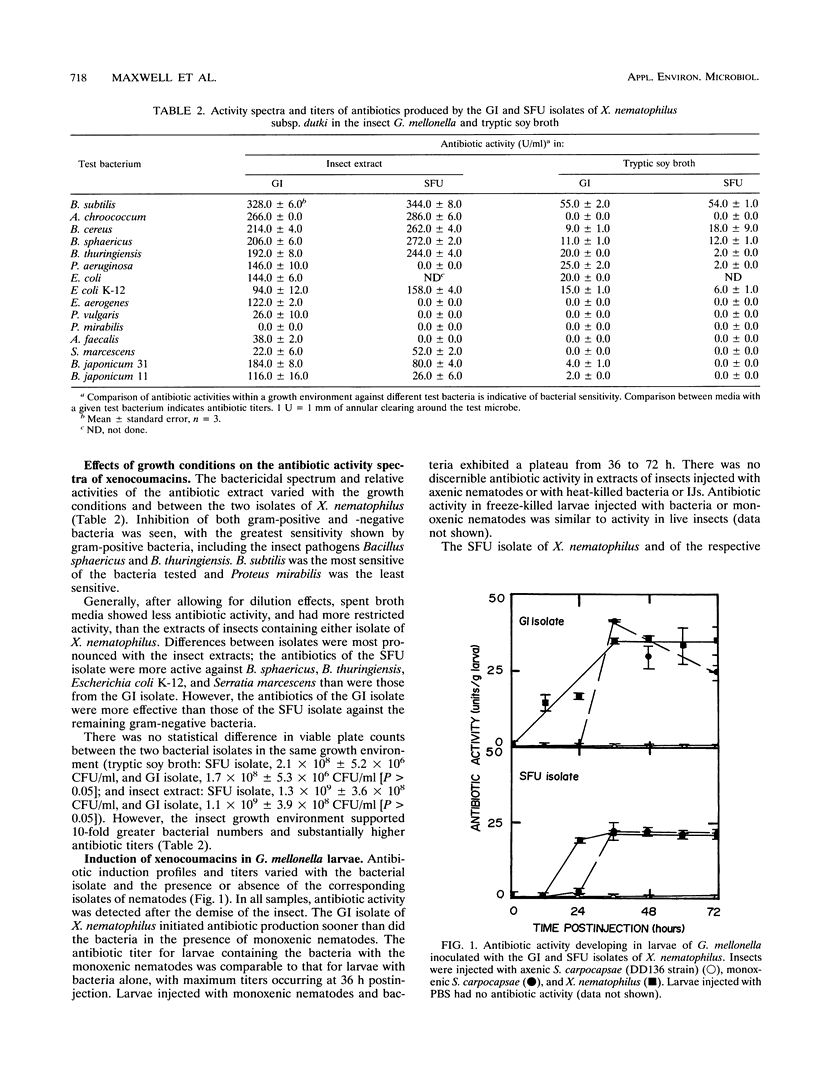

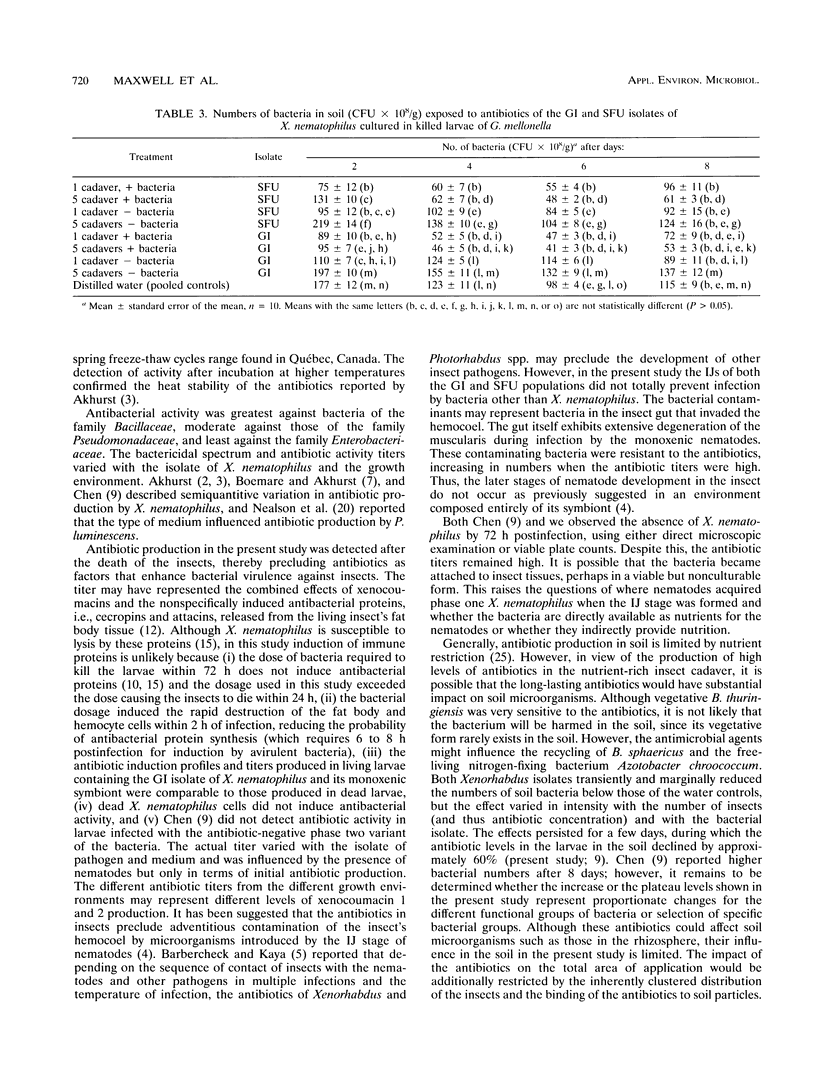

Selected References
These references are in PubMed. This may not be the complete list of references from this article.
- Akhurst R. J. Antibiotic activity of Xenorhabdus spp., bacteria symbiotically associated with insect pathogenic nematodes of the families Heterorhabditidae and Steinernematidae. J Gen Microbiol. 1982 Dec;128(12):3061–3065. doi: 10.1099/00221287-128-12-3061. [DOI] [PubMed] [Google Scholar]
- Frustaci J. M., Sangwan I., O'Brian M. R. Aerobic growth and respiration of a delta-aminolevulinic acid synthase (hemA) mutant of Bradyrhizobium japonicum. J Bacteriol. 1991 Feb;173(3):1145–1150. doi: 10.1128/jb.173.3.1145-1150.1991. [DOI] [PMC free article] [PubMed] [Google Scholar]
- McInerney B. V., Gregson R. P., Lacey M. J., Akhurst R. J., Lyons G. R., Rhodes S. H., Smith D. R., Engelhardt L. M., White A. H. Biologically active metabolites from Xenorhabdus spp., Part 1. Dithiolopyrrolone derivatives with antibiotic activity. J Nat Prod. 1991 May-Jun;54(3):774–784. doi: 10.1021/np50075a005. [DOI] [PubMed] [Google Scholar]
- McInerney B. V., Taylor W. C., Lacey M. J., Akhurst R. J., Gregson R. P. Biologically active metabolites from Xenorhabdus spp., Part 2. Benzopyran-1-one derivatives with gastroprotective activity. J Nat Prod. 1991 May-Jun;54(3):785–795. doi: 10.1021/np50075a006. [DOI] [PubMed] [Google Scholar]
- Richardson W. H., Schmidt T. M., Nealson K. H. Identification of an anthraquinone pigment and a hydroxystilbene antibiotic from Xenorhabdus luminescens. Appl Environ Microbiol. 1988 Jun;54(6):1602–1605. doi: 10.1128/aem.54.6.1602-1605.1988. [DOI] [PMC free article] [PubMed] [Google Scholar]


